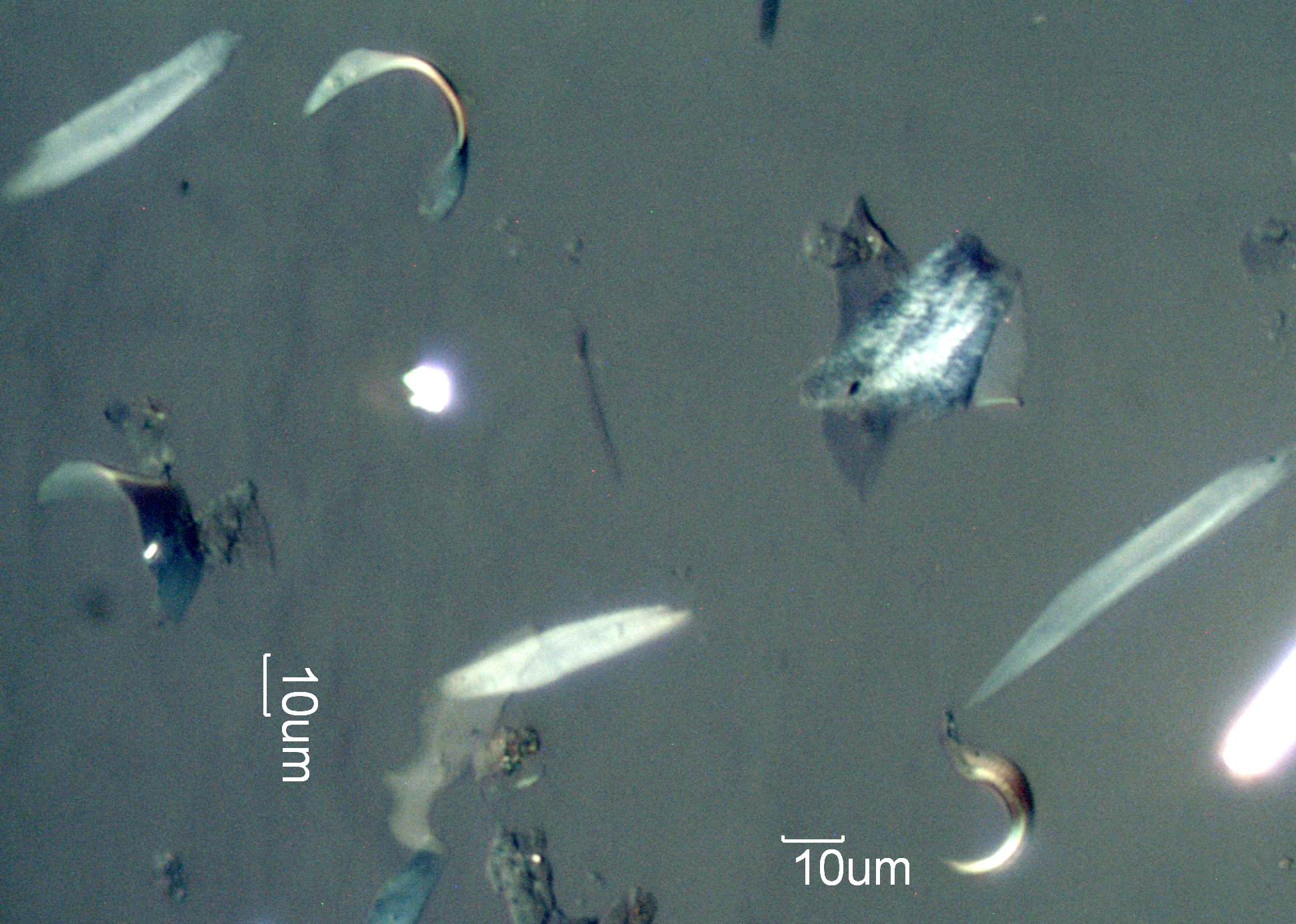Pet Dander
This is an environmental tapelift collected from a home with two dogs, four birds, and a cat. The long straght particles belong to dogs. There are three in the field of view. The hook shaped particles are bird dander. There are two in the field of view. There is one cat dander particle. It is the more triagular shaped bright flake up and right of center. Pet dander far out numbered human skin flakes in this home.
Transmitted Off Crossed Polarized Light Illumination
in terms of its expression within the particle and from particle to particle.
Definition/Function:
Pet dander is more optically active than most human dander.
Significance in the Environment:
Dog dander is common in homes with a pet dog but is also common in office and school environments from the clothing of dog owners. It is more common than cat dander in office and school environments because dogs tend to generate more dander than cats. Fewer people are sensitive to dogs than to cats so the presence of dog dander is generally not a source of health complaints in these environments.Characteristic Features:
Dog skin flakes tend to be about three times or more as long as they are wide. In indoor tapelift samples they can be confussed with very fine wood sawdust particles but the wood sawdust particles almost always contain cell structure or distictive fibril structure at the edges that distinguish the sawdust from the dog dander. Sawdust has a much higher birefringence than dog dander and so can easily be distinguished when viewed with crossed polarized light. The stress birefringence evident in the dog dander is typically irregularin terms of its expression within the particle and from particle to particle.


